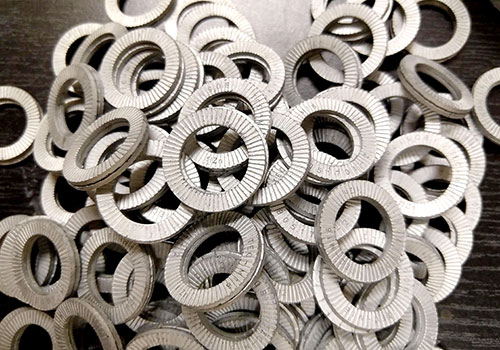Fusion Energy Project uses Wedge Locking Washers
- Construction, Wedge Locking Washers
- January 8, 2021

Bolt security was a key concern on our joint project with Tokamak Energy. The design team chose our Wedge Lock washers to prevent any bolt loosening in the high loaded areas that were subjected to movement and vibration. See how the washers work here https://www.youtube.com/watch?v=hvq3_m62JJA&t=37s
“Tokamak Energy is a private company aiming to develop fusion energy as a commercial reality. As part of this endeavour they own and operate the world-leading ST-40 spherical tokamak which will set new records for high performance over the next few years.
For more details on Tokamak Energy please see https://www.youtube.com/channel/UCuSlFJbBUIj1zfJLRnGXSow or https://www.tokamakenergy.co.uk for details.
As part of the development programme, it is necessary to run “diverted” plasmas. A diverted plasma is one where the magnetic configuration is changed in order to direct particles leaving the plasmas into a specific region (hence the name “divertor”), these particles entrain any impurities, maintaining cleanliness and high performance in the core plasma. The divertor hardware intercepts these particle streams and traps the impurities. As such the divertor is subjected to extreme heat fluxes up to 10 MW/m2 and is acknowledged as one of the harder parts of a tokamak to design and build (for reference a pan on a hob normally sees heat fluxes of 0.5MW/m2).
Tokamak Energy designed, manufactured and installed a divertor for the ST-40 tokamak between February and August 2020. This divertor contains 528 individual tiles to intercept the plasma and was retrofitted into the existing device. The project used in excess of 5300 individual components which were bolted together into sub-assemblies and installed.
The tokamak environment is not kind to mechanical components and one such aggression is vibration in operation. Bolts can work loose and need to be prevented from coming undone. 488 individual pairs of Wedgelock locking washers were used in this project to prevent this from occurring. The washers were ordered in the unglued condition to maintain compatibility with the ultra-high vacuum conditions inside the vessel (the pressure inside is around one billionth of that of the atmosphere so glues can “outgas” and contaminate this environment).
The first results from this divertor are expected from the physics campaigns to be performed during 2021. It will be exciting – and it will only be possible if every component functions correctly.



